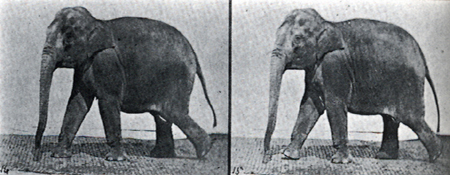 |
||
| Release Your Inner Monty Python | ||
| HOME The Art of Memory Origin Myth Vivid Imagery Memory Is Personal Your Inner Monty Python The Use of Places Poetry and Song The Grid System Why It Works The Number Mnemonic Free Ass-sociate Conclusion |
Having read it once, you probably won’t have any trouble remembering the amazing story I told at the beginning, about the poet and the ungrateful host, and how the poet “discovered” the art of memory by trying to identify the bodies of the other guests after they’d been crushed to death. It’s a vivid story, and vivid stories stick in memory readily, with virtually no conscious effort. But do you remember the names of the poet and his host? Do you remember where it took place? If you do remember these details, it is because you mentally linked the names to something more familiar. And I’ll warn you at this point: Memory is never pretty. In fact, the process of memory, of association, is always rather, well, silly. In my case, to remember the entire story, all I need is a single mental image: In front of a ruined banquet hall, Paul Simon idly ‘simonizes’ his car with one hand (Simoniz was some sort of car wax or sealant they used to advertise on TV when I was a kid); with his free hand he is idly twirling his car keys. Sticking out of the rubble behind him is a crumpled telescope that was once its owner’s pride and joy; it is surrounded by thistles so you can’t retrieve it without getting pricked. It sure is stupid, but you sure will remember it – and thus have a hard time not remembering that Simonides of Ceos (with a hard “C” it sounds a bit like “keys”) invented the art of memory, and that his proud, ill-fated host was a guy named Scopas (the telescope), a nobleman of Thessaly (the thistles). These are just the first associations that lept to mind for me; you would doubtless produce other ones (a friend or relative named Simon, etc….), and a different, equally absurd or stupid image, but one that works for you. Again, memory is idiosyncratic and personal, and the result is always silly. I find that memory images often look very much like dream images, or like the absurdist comedy sketches of Monty Python. It's not accidental. Creating memory images uses the same imaginative devices used by artists, poets, and comedians from time immemorial: metaphors, rhymes, alliteration, and puns. Basically, these things all have the following process in common: They link unrelated things together based on some superficial or trivial thing they share. It may be how they sound – a rhyme or double-entendre – or some pattern or structure common to both of them, which is all a metaphor is. You may (like me) hate puns – that is, the linking of two totally separate ideas simply because they sound alike (e.g., "Nichols" and "nickels" in the Woody Allen example). But in fact puns are a large basis for how the mind works. The brain is a punning organ; the puns it uses to create associations are visual, auditory, tactile, probably even involve taste and smell – they are much more complex, in other words, than the bad puns of your roommate freshman year. (Dreams, which reflect the process of memories being consolidated, consist of elaborate multisensory puns, a fact that can be detected readily if you make a habit of recording your dreams.) It has been suggested that the reason most people react with such distaste to puns is that they have the feel of a biological function, something that we intuitively feel is best left unseen and unsaid, like evidence of our digestion. But if you want to gain control over your memory, you must make a friend to this process, and become good at associating unlike things, using whatever superficial similarities they immediately present to you. But comedians and writers like Shakespeare have always understood the power of the pun. To remember a whole sequence of things – an argument, a book, whatever – you just need a way of stringing together a bunch of these punny images. You need a memory structure, in other words. That’s where places come in. |

|
All material copyright 2006
Eric Wargo